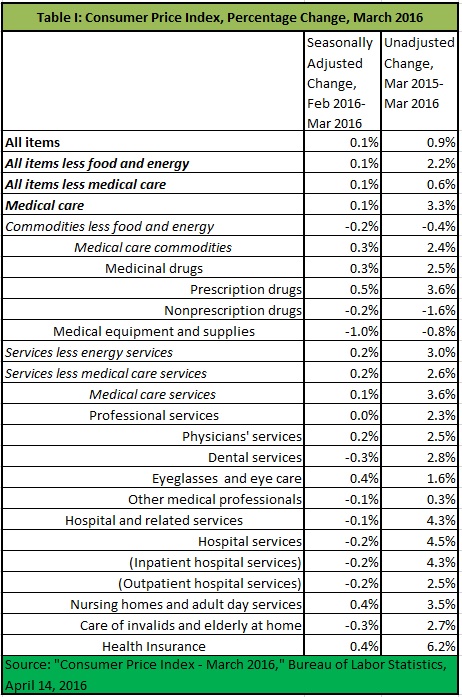CPI: Most Medical Price Hikes Stall
 The Consumer Price Index for March indicates that medical price inflation matched changes in other prices charged to consumers, with a slight uptick of 0.1 percent. Prescription drugs (0.5 percent increase), nursing homes and adult day care, eyeglasses, and health insurance (all with 0.4 percent increases) stood out as continuing to experience higher inflation than other items. Prices for many health goods and services actually dropped.
The Consumer Price Index for March indicates that medical price inflation matched changes in other prices charged to consumers, with a slight uptick of 0.1 percent. Prescription drugs (0.5 percent increase), nursing homes and adult day care, eyeglasses, and health insurance (all with 0.4 percent increases) stood out as continuing to experience higher inflation than other items. Prices for many health goods and services actually dropped.
However, over the last twelve months, medical prices faced by consumers have grown much faster than non-health prices: 3.3 percent versus 0.6 percent. Prescription prices increased 3.4 percent. However, inpatient hospital services and health insurance prices increased much faster, by 5.9 percent and 6.0 percent.
When we compare the medical components of the CPI with those in the Producer Price Index, it appears that hospitals, not drug makers, are shifting more prices directly onto consumers.
(See Table I Below the fold.)


